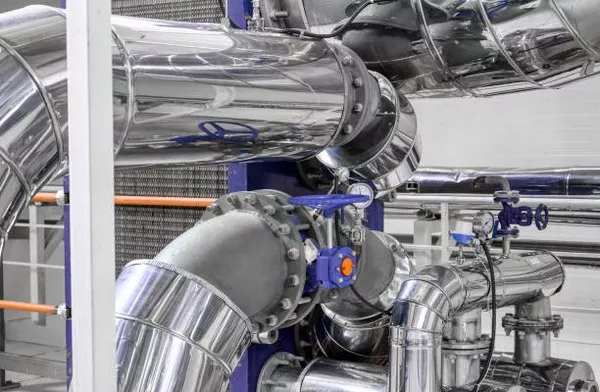In the pursuit of efficient water resource management, accurate measurement of water flow is paramount. Water flow meters play a pivotal role in industries, municipalities, and households alike, ensuring optimal utilization of this precious resource. These devices provide crucial insights into consumption patterns, enable leak detection, and aid in billing and allocation processes. This article delves into the inner workings of water flow meters, elucidating their mechanics and highlighting their significance in modern water management systems.
The Fundamental Principles
Water flow meters operate on a simple yet effective principle: measuring the rate at which water flows through a specific point in a pipe or conduit. This measurement is generally expressed in units of volume per unit of time, such as cubic meters per hour or gallons per minute.
1. Mechanical Flow Meters:
Mechanical flow meters, also known as positive displacement meters, are one of the earliest types of flow measurement devices. They work by dividing the flow into discrete volumes and then counting these volumes to calculate the total flow. These meters consist of rotating parts, such as gears, pistons, or vanes, which are driven by the flowing water. With each rotation or displacement, a fixed volume of water is measured. Mechanical flow meters are robust and can handle various viscosities and flow rates, making them suitable for applications like residential water billing and industrial processes.
2. Velocity-Based Flow Meters:
Velocity-based flow meters determine flow rate by assessing the velocity of the flowing water. These meters include devices like electromagnetic, ultrasonic, and turbine flow meters. Among these, electromagnetic meters utilize Faraday’s law of electromagnetic induction to measure the voltage generated as water flows through a magnetic field. Ultrasonic meters, on the other hand, emit ultrasonic waves through the water, measuring the time it takes for the waves to travel upstream and downstream, thereby calculating the flow rate. Turbine meters consist of a rotating turbine placed in the water stream, and the rate of rotation is directly proportional to the flow rate.
3. Differential Pressure Flow Meters:
Differential pressure flow meters operate on the principle that a constriction in the flow path leads to an increase in flow velocity and a decrease in pressure. This change in pressure is used to infer the flow rate. One of the most common types is the Venturi meter, which employs a tapered tube to create a pressure drop across the constriction. By measuring the pressure difference between the throat and the inlet, the flow rate can be accurately determined.
4. Ultrasonic Doppler Flow Meters:
Ultrasonic Doppler flow meters are particularly useful for measuring the flow of liquids containing particles or bubbles. These meters utilize the Doppler effect, where the frequency of sound waves changes when reflected off moving particles. By analyzing the shift in frequency, the flow rate can be calculated. Ultrasonic Doppler meters are often used in wastewater and industrial applications.
Digital Precision: The Inner Workings
In the digital age, water flow meters have evolved to integrate advanced technologies, enhancing their precision and capabilities. Many modern flow meters are equipped with digital displays and communication interfaces, allowing real-time monitoring and remote data collection.
1. Sensor Technology:
The heart of digital flow meters lies in their sensors. These sensors are strategically positioned within the flow path to capture relevant data. For example, electromagnetic flow meters use electrodes to measure the voltage generated by the flowing water, which is directly proportional to its velocity. Ultrasonic flow meters employ transducers that emit and receive ultrasonic signals to calculate the time taken for sound waves to traverse the flow. These measurements are then processed to derive the flow rate.
2. Microprocessors and Algorithms:
Microprocessors are the brains behind digital flow meters. They process the data from sensors, apply complex algorithms, and convert the raw measurements into meaningful flow rates. These algorithms often compensate for factors like temperature, pressure, and viscosity, ensuring accurate measurements under varying conditions. Additionally, microprocessors enable advanced features like leak detection and automatic calibration.
3. Data Display and Communication:
Digital flow meters typically feature user-friendly displays that show real-time flow rates, totalized volumes, and other relevant information. Furthermore, many modern flow meters come equipped with communication interfaces such as Modbus, Ethernet, or even wireless technologies like Wi-Fi and Bluetooth. This enables seamless integration with supervisory control and data acquisition (SCADA) systems, allowing for remote monitoring and data collection.
Advantages and Applications
Water flow meters offer a plethora of benefits across a wide range of applications:
1. Resource Management:
Accurate flow measurement facilitates efficient water resource management by providing insights into consumption patterns. This is especially crucial in municipalities, where water distribution and conservation strategies rely on precise data to optimize usage.
2. Leak Detection:
Flow meters can identify leaks or abnormal flow rates, enabling swift intervention and minimizing water loss. In industrial settings, this can prevent costly damage to equipment and infrastructure.
3. Billing and Allocation:
In commercial and residential settings, flow meters play a pivotal role in accurate billing. Tenants and consumers are billed based on their actual water consumption rather than estimations, ensuring fairness and transparency.
4. Process Control:
Industries rely on flow meters to regulate processes and maintain consistent product quality. From pharmaceuticals to food and beverage manufacturing, flow meters ensure precise ingredient mixing and product delivery.
Conclusion
Water flow meters are indispensable tools in the modern quest for sustainable and efficient water management. By harnessing various principles of physics and integrating cutting-edge technologies, these devices enable accurate and real-time measurement of water flow rates. From domestic households to sprawling industrial complexes, flow meters play a vital role in optimizing water consumption, preventing waste, and facilitating informed decision-making. As technology continues to advance, the capabilities of water flow meters are set to evolve, further enhancing their role in shaping a water-conscious future.

